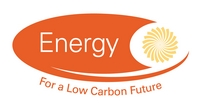Projects
Projects: Projects for Investigator |
||
| Reference Number | NIA_NGET0046 | |
| Title | Flexible rating options for DC operation | |
| Status | Completed | |
| Energy Categories | Other Power and Storage Technologies(Electricity transmission and distribution) 100%; | |
| Research Types | Applied Research and Development 100% | |
| Science and Technology Fields | ENGINEERING AND TECHNOLOGY (Electrical and Electronic Engineering) 100% | |
| UKERC Cross Cutting Characterisation | Not Cross-cutting 100% | |
| Principal Investigator |
Project Contact No email address given National Grid Electricity Transmission |
|
| Award Type | Network Innovation Allowance | |
| Funding Source | Ofgem | |
| Start Date | 01 January 2012 | |
| End Date | 01 April 2015 | |
| Duration | 39 months | |
| Total Grant Value | £245,000 | |
| Industrial Sectors | Power | |
| Region | London | |
| Programme | Network Innovation Allowance | |
| Investigators | Principal Investigator | Project Contact , National Grid Electricity Transmission (100.000%) |
| Web Site | http://www.smarternetworks.org/project/NIA_NGET0046 |
|
| Objectives | To develop tools for the rating and technical assessment of high power HVDC cable options. The work will initially concentrate on cables with mass impregnated insulation. To provide National Grid with techniques to evaluate continuous, transient and dynamic (real time) ratings for DC cable circuits and to evaluate the options and limits for features such as current dependent voltage control. Development of a tool for rating and technical assessment of high power HVDC cable options. | |
| Abstract | The calculation of current ratings for DC cable is significantly more complex than that for AC cable. The rating is often determined by electric stress constraints rather than considerations of thermal ageing. Ratings are also strongly influenced by thermally induced pressure transients within the cable. In some cases the rating of the cable can be restricted by the cable being too cold. As the normal operating voltage of the cable increases the cable can experience high levels of electric stress while the cable is hot. As the cable cools it is susceptible to electrical failure. Some manufacturers require the converter station to reduce its operating voltage if the current on the link is reduced. The implementation of these current dependent voltage control systems may help protect the cable, but this approach does not align well with the concise cable rating sheet used as part of the CUP package. This introduces an additional level of complexity for Network Operations. The method that has been proposed for this project includes: Initial review of the modelling techniques and materials parameters applicable to HVDC cable ratings Interim report on algorithm development for thermal rating of MI cables Interim report on algorithm development for steady state modelling of electric in non-linear insulating materials Report on temperature and electric field modelling for rating MI cablesNote : Project Documents may be available via the ENA Smarter Networks Portal using the Website link above | |
| Data | No related datasets |
|
| Projects | No related projects |
|
| Publications | No related publications |
|
| Added to Database | 14/08/18 | |



